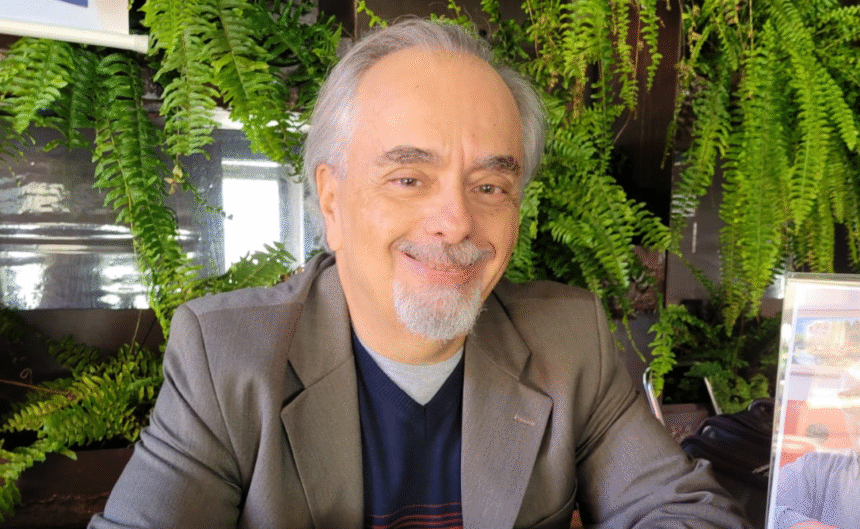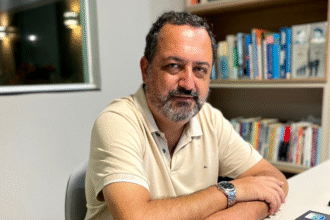In “50 Shades of Life,” writer and professor José Paulo Alves Fusco takes the reader through short, sensitive, and reflective stories that explore memories, loves, mistakes, and new beginnings on the “wild asphalt” of everyday life. Inspired by masters such as Nelson Rodrigues, Rubem Alves, and Jorge Amado, Fusco transforms the ordinary into literature, alternating humor and melancholy in stories that resonate like an existential diary.
You describe “50 Shades of Life” as a river flowing toward the ocean—a beautiful, open-ended metaphor. What was that creative flow like for you? At what point did you realize that these stories formed a cohesive whole, even though they were stand-alone tales?
My main goal throughout the entire process of writing the book was to try to discuss stories from people’s daily lives, bohemian life, and detective stories in the big city, which represented the common thread, a kind of common branch of the river that would receive the various narratives. Despite being pulled and directed by this common flow, they are self-contained stories, each with a beginning, middle, and end, which allow the book to be read according to each reader’s personal “appetite”, but without losing the “spirit of the thing”. The feelings can be of joy, a desire to know the end of the stories, curiosity, or a way to pass the time. Most of the stories were set in nightclubs, discos, police stations, or even in family homes and apartments, where the characters took us on their adventures.
The work moves between humor and melancholy, reflecting the duality present in so many human experiences. How do you personally deal with this alternation of feelings — and how does it influence your writing?
Putting my emotions into words on paper, I present in this work a collection of “adventures” lived in the context of the “wild asphalt”, where our loves and passions roam. So we go, walking, groping half-blind, opening “paths” in the jungle, here and there, falling many times and getting up many more, using what remains of our senses in their various tones, balancing ourselves on the worldly desires that reach us.
Along such a path, what was once a panoramic view of the universe is reduced to the next poorly lit corner, to the streets that disappear into the darkness of sleepless nights, to the oppressive walls of a room in complete solitude. What was once lightness suddenly becomes heavy, uncomfortable, a gray and jagged frame. It hurts and wounds like broken glass in the hands of a child.
To convey such thoughts (and feelings), I always try to imagine myself as part of the plot. First-person narration is a device that often allows us to first appreciate the events experienced in the story being told, comparing our own feelings with those being represented there, correcting and directing the flow of emotions. Could such an outcome have been different? Isn’t the evolution of a given conflict being overvalued? What could the other participants in the story be thinking? Does the story being told make sense, considering the reality of the social context in which everything happens?
You transform everyday life into literary material, which requires a keen eye for the subtleties of life. Where does this sensitivity come from to see poetry where many only see routine?
“50 SHADES OF LIFE” is a collection of short stories, some of them inspired by Rodrigues and others diverse, collected from the corners we all pass by on an endless pilgrimage. They are truly colorful tales that seek to portray the emotions of the small events that occur in everyday life, which we rush past without really noticing. These are episodes so commonplace that, at first glance, they are difficult to translate into words. To do so, we need to draw on our emotional memories and fill them with the surroundings and the connections we experience in each of them.
Throughout the book, there is a strong presence of memory, especially of family relationships. How have these memories shaped you as a writer? Is there a story that was born from a particularly striking episode in your story?
I remember well the period when I lived in São Paulo, due to my professional obligations. I always left home prepared for the four seasons, with umbrella, coat and waterproof shoes, because in a single day it could be cold in the morning, hot in the afternoon and rainy at night. However, after some time, I realized that those who knew the “path to the galleries” in the center had a better chance of escaping the rain without getting too wet. It was a secret that only the “initiated” knew.
In the same way, I began to realize that in a single day, we could go through all kinds of situations, ranging from joy for a job well done, an achievement, to feelings of anger and loneliness. It started in the morning and only ended “when it was over” (as Chacrinha used to say). I learned so many lessons from these daily experiences and from the emotions that I began to feel and experience in a different way. The many people I met, who played the different roles that are part of this collection, also taught me to perceive many other facets of life.

You cite Nelson Rodrigues, Rubem Alves and Jorge Amado as influences. How did these authors help you find your own voice in literature?
When we open the eyes of our soul, we begin to see many other beings who, like us, are trying to recover the forgotten formulas in the inkblots that our memories have become. How can we translate such memories into reflections that we can understand? First of all, in this life we all seek to return to a homeland that we do not know, we do not remember exactly where it is, but it must not be far away. Paradoxically, it is within us, but we do not know how to get there. To this end, the brown Cartesian rationality of the human beast begins to challenge us every day, but it is clearly not enough. The doors that appear to us here do not have signs, they do not say where they can take us, nor do they follow a certain logic, liberating us from the cage we are in. Thus, the first challenge is to use a language that makes sense to me, so that I can interpret the life around me, establishing a cause and effect relationship between everything that comes and goes in my story. Only after I have achieved this understanding do I feel strong enough to tell what I have lived and experienced so that other people can understand it too. In short, I first try to tell the stories to myself, and if I can understand them, then I tell them to others.
” 50 Shades of Life” seems to invite the reader to revisit their own emotions and experiences. What kind of transformation do you hope to provoke in those who read your book?
The colors of our emotions in this world, despite being clearer, become increasingly difficult to achieve due to the increasing complexity of life. We try and fail, try and fail, and then try and fail again, as if we were eaglets learning to fly. Life is just like that, without many illusions. “Life as it is,” as Nelson Rodrigues defines it. The world is a school from which we can only leave after a certain “period of study.” A famous writer, already in his old age, when asked if age had brought him wisdom, said that “I really don’t know much, but I already suspect a lot of things.” Therefore, I hope that my stories will make many people begin to suspect that a life without reflection is not worth much.
Despite dealing with profound themes, you chose an accessible language that welcomes without simplifying. Was this choice intuitive or did it come as a conscious stylistic decision?
I believe that each of us is born with a profile that is more focused on a specific way of seeing and understanding the things around us. There are more rational, systemic people who try to fit the world into certain formats with more defined limits, archetypes, while others see the world from a less systemic perspective, with more feelings than reason. However, the material world in which we live is more of a continuum between these two extremes. In this way, each individual sees life from a multiple perspective, in many dimensions. My “choice” was more intuitive than conscious, because I believe that those who read my work will be able to better understand the ideas I seek to communicate.
Life only truly begins to exist when we move, our emotions begin to arise and bombard us, searching for their place within us. When we seek something and begin to love someone, become passionate about what we do, about our brothers and sisters who accompany us, about nature and the world we live in, our “adventures” begin to make sense when they fit into one or more of these visions. Then, it becomes worth expressing them, telling the world about what we have been through, thought and felt.
For you, literature is a way to channel emotions. What has changed in you since writing this book — as a man, a teacher, and a writer?
Each of us, sooner or later, ends up discovering a way to better communicate our feelings, the rivers of emotions that run through our souls. Some consider painting to be the art in which they can express themselves in the most correct way, while others seek to obtain in music, by singing or playing an instrument, the best way to communicate, to translate into sounds and melodies everything that gravitates within their being. My river of feelings led me, after much reading and reflection, to the ocean of writing and there I seek to find the meaning of the life that welcomed me.





